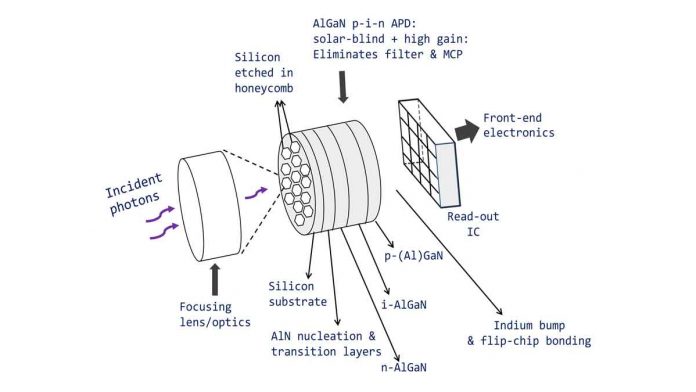Numerous devices and detectors sense and catalog deep ultraviolet frequencies which the Earth’s ozone layer otherwise absorbs. Most solar-blind space-borne imaging platforms still rely on photomultiplier tubes and/or microchannel plates working with silicon photodiodes that increase the systems’ complexity and weight.
Scientists of India asked why ultrawide bandgap (UWBG) photodetectors with deep UV capabilities haven’t enjoyed widespread adoption? They are taking stock of advancements and challenges in the field.
UWBG photodetectors made from aluminum gallium nitride and gallium (III) oxide are more efficient, unlike their silicon-based counterparts. They can tailor cutoff wavelengths and do not need optical filters to reject visible or infrared wavelengths for solar-blind applications.
The ability to image with UV is of strategic and astrophysical interest as well as important for industrial and biomedical applications. Scientists said further work is needed to optimize how the materials are assembled over large area substrates, in addition to determining how rugged and reliable devices are in real-world applications.
This is a process of depositing crystalline materials into a thin film called epitaxy. Scientists said, a better understanding can show how these devices can achieve superior performance by optimizing the arrangement of the atoms in the lattice of the semiconductors. They introduce a new benchmark for comparing photodetectors by accounting for gain, noise and bandwidth, rather than the oft-cited parameters of photo-to-dark current ratio, responsivity, transient responses and others.

